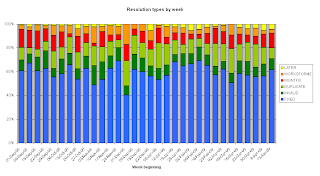Australian copyright law has a new landmark decision as of this morning, with Justice Cowdroy of the Federal Court of Australia handing down his decision in the Roadshow Films v iiNet Limited case, in which the misleadingly-named Australian Federation Against Copyright Theft (AFACT) sued iiNet, Australia's third-largest ISP, alleging copyright infringement. The case is significant in several ways both for ISPs and for operators of Internet services in Australia.
AFACT is a consortium of Hollywood movie studios who alleged that iiNet customers infringed copyrights owned by them in certain films by distributing copies via the BitTorrent file sharing protocol, and that iiNet itself had infringed by authorising its customers' infringements. AFACT had engaged an anti-piracy software firm to track the transmission of films over BitTorrent by IP addresses allocated to iiNet, and had then sent notices to iiNet warning them of the infringements and requesting that the ISP take action against the customers concerned. iiNet argued that it had not authorised any infringements. It also argued that privacy provisions in telecommunications legislation prevented it from acting upon any notices sent to it, and alternatively that it was protected from litigation by safe harbour provisions in copyright legislation.
Cowdroy J today held that while iiNet customers had infringed copyrights owned by AFACT members, iiNet had not authorised these infringements, for three reasons:
- that one can distinguish "the provision of the 'means' of infringement compared to the provision of a precondition to infringement";
- that any scheme for acting on AFACT notices would not constitute a relevant power or a reasonable step available to prevent infringement (within the meaning of s 101(1A) of the Copyright Act, which sets out factors that must be considered in assessing authorisation); and
- that iiNet did not sanction or approve of copyright infringement by its customers.
Cowdroy J held that the means of infringement in this situation was the BitTorrent system (the protocol, trackers and clients) and not iiNet's network, thus distinguishing classic authorisation cases such as University of New South Wales v Moorhouse (involving a university library that provided photocopiers for the use of library patrons) as well as more recent Internet-centric cases such as Universal Music v Sharman Licence Holdings (in which Sharman was found to have authorised infringements via its Kazaa file-sharing software, with which Sharman both refrained from preventing infringement and actively encouraged infringement).
Distinguishing in this way the ultimate means from mere preconditions injects some clarity into the test for authorisation, which has largely revolved around degrees of control and of encouragement (Cowdroy J's second and third reasons mentioned above go to this classic test). This approach was obviously advantageous for iiNet. However, for operators of services such as wikis and social-networking sites, this approach would seem to render it more likely that they would be found to be authorising any copyright infringements by users, by providing the means of infringement such as a file upload facility or the ability to edit pages.
Without authorisation AFACT's case thus failed, however Cowdroy J went on to consider iiNet's other arguments in its defence anyway, in the event of an appeal (which would seem highly likely). He held that iiNet would not have been protected by s 112E of the Copyright Act, which protects telecommunications providers from being held to authorise infringement merely through providing the telecommunications service used to carry out the infringement. However, he found that iiNet would have been protected by the safe harbour provisions in the Copyright Act (s 116AA ff) because it had a "reasonably implemented" policy for dealing with repeat infringers.
These safe harbour provisions were based on the United States' OCILLA safe harbour provisions, although while the American provisions extend to "online service providers" (including website operators) the Australian ones are limited to "carriage service providers", that is, ISPs themselves. To my knowledge this is the first case to seriously address these provisions, and Cowdroy J notably utilised American OCILLA jurisprudence in doing so. Thus it seems that the safe harbour provisions will provide reasonably strong protections for ISPs, although with the current form of the legislation, this is of little comfort to online service providers.
The decision is significant in the context of Australian copyright law, and will be a boon for ISPs operating in Australia. However, for online service providers (such as operators of wikis), the substance of the decision will only serve to underline their precarious legal position in Australia, as opposed to their American counterparts, when it comes to copyright infringement by users of their services. They are not protected by safe harbours, and a "means"-based test for authorisation may well be worse than the more traditional control/encouragement test, if indeed it replaces it (it may merely augment it).
The silver lining however may be in Cowdroy J's rhetoric. His discussions of AFACT's nature and objectives, of its arguments and trial conduct, and of its attempt essentially to foist upon iiNet a positive obligation to protect its members' copyright interests, are enlightening. Robert Corr extracts some choice quotes here. Following last year's even more significant landmark decision by the High Court of Australia in the epic IceTV case, there would seem to be a healthy desire, in certain quarters of the legal community, to reevaluate some of the more extremist trajectories in Australian copyright law.






